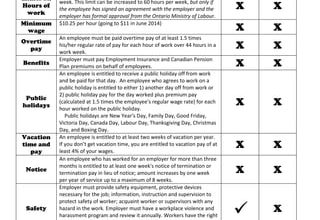Mastering HR’s response to work under protest is a critical aspect of maintaining a harmonious and productive work environment. The concept of ‘working under protest’ refers to situations where employees continue to perform their duties while expressing dissatisfaction with certain aspects of their employment. This could be due to issues related to pay, working conditions, or other employment terms. Understanding the protestation definition, which is a formal declaration of objection, is crucial in these scenarios. It’s also important to know the rights and limitations of both parties involved. For instance, can you be sacked for striking? What does it mean to sign under protest? How should payment under protest be handled? This guide will delve into these questions and more, providing essential tips for HR professionals navigating these complex situations.
Understanding Work Under Protest
Work under protest is a term used when employees continue to work while expressing their dissatisfaction with certain aspects of their job. This could be due to issues related to pay, working conditions, or other employment terms. The protestation definition in this context is a formal declaration of objection or disapproval. It’s a demonstration work of sorts, where employees voice their concerns while still fulfilling their job responsibilities.
Signing Under Protest and Duress
There are instances where employees may be asked to sign documents under protest or duress. The term ‘signed under protest’ means that the employee disagrees with the content of the document but is signing it under pressure or coercion. Similarly, ‘signing under duress at work’ implies that the employee feels compelled to sign a document due to fear of negative consequences, such as job loss. It’s crucial for HR professionals to understand these terms and ensure that employees are not forced into signing documents they disagree with.
Protests and Strikes: What HR Needs to Know
Protests and strikes are more overt forms of employee dissatisfaction. They involve employees collectively refusing to work or picketing outside the workplace to express their grievances. The question often arises – can you be sacked for striking? The answer depends on the laws of the country. In the UK, for instance, employees have the right to strike, and it’s illegal for employers to dismiss them for participating in a lawful strike. However, this may not be the case in other jurisdictions.
Handling Payment Under Protest
Payment under protest is another critical aspect that HR needs to understand. This term is used when an employee disagrees with the amount of pay they have received but accepts it under protest. In such cases, the employee reserves the right to claim the disputed amount later. HR should ensure that such disputes are resolved promptly to maintain employee satisfaction and morale.
Protest Rights and Limitations
Understanding the rights to protest is crucial for HR professionals. Employees have the right to express their dissatisfaction and concerns about their employment conditions. However, these rights are not absolute and come with certain limitations. For instance, protests should not disrupt the normal functioning of the workplace or involve any form of violence or harassment. HR should ensure that employees are aware of their rights and limitations when it comes to protests.
Managing Job Protests
Job protests can be challenging to manage. They can disrupt the normal functioning of the workplace and affect productivity. However, they also provide an opportunity for HR to address underlying issues and improve employee satisfaction. Here are some tips for managing job protests:
- Listen to the employees’ concerns and try to understand their perspective.
- Communicate openly and honestly with the employees.
- Try to resolve the issues promptly and fairly.
- Ensure that the employees’ rights are respected and that they are not penalized unfairly for protesting.
Conclusion
Mastering HR’s response to work under protest is crucial for maintaining a harmonious and productive work environment. HR professionals need to understand the various terms and concepts related to protests, such as the protestation definition, signing under protest, and payment under protest. They also need to be aware of the rights and limitations of employees when it comes to protests. By handling these situations effectively, HR can help to resolve employee grievances and improve overall job satisfaction.










